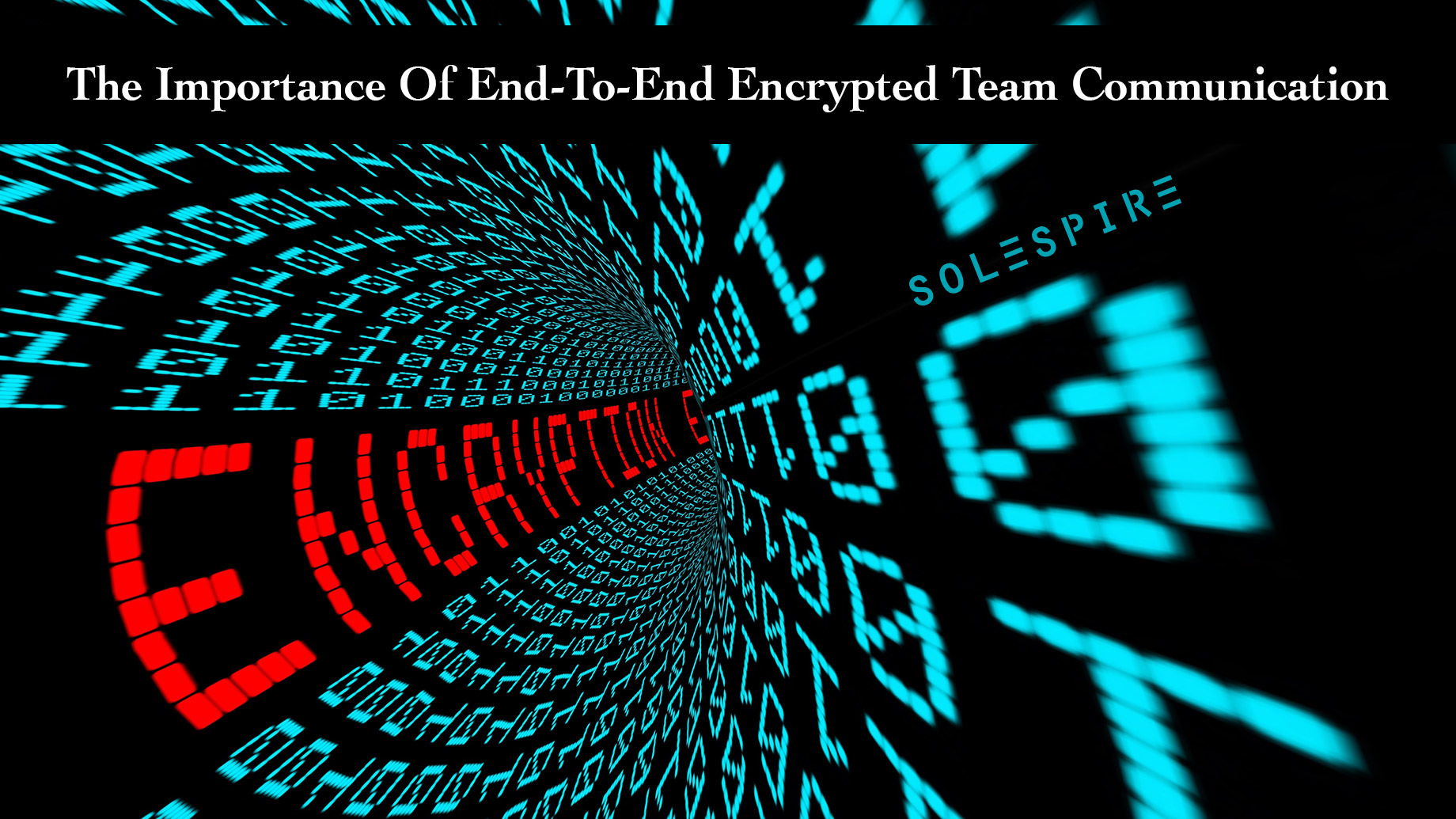
As remote working arrangements make online communications between teams more common than ever before, organizations have a greater responsibility than ever before to ensure that these communications are private and secure.
One of the most important ways to do this is through the use of end-to-end encryption in your team communications. Industry experts and observers believe that end-to-end encrypted team communication is the future.
In this article, we walk you through the basics of end-to-end encryption and explain why it is so important for team communication today.
How does end-to-end encryption work?
End-to-end encryption keeps data encrypted while it travels between two devices. Its goal is to prevent anyone other than the sender and receiver from being able to access the cryptographic keys required to decrypt the messages.
Encrypted messages are sent through a third party in encrypted form. It is only decrypted by the recipient, using their device.
While end-to-end encrypted team communication ensures that hackers and service providers can’t access or read your messages, you should still be careful about who you send these messages to. Hackers may use phishing scams (such as asking for sensitive information) in order to gain access to your private key.
End-to-end encryption is fast becoming one of the biggest technology trends of 2021, especially for organizations with a vast remote worker base or those that handle sensitive information daily.
Why is end-to-end encryption important for team communication?
End-to-end encrypted team communication protects your data from hackers and overzealous service providers. It also ensures that only the intended recipient can view the message.
Its advantages over cleartext (messages with no encryption at all) and encryption-in-transit (messages that are encrypted before being sent to the server, where it will be decrypted, processed, then re-encrypted before sending it to its intended recipient) are numerous.
To mention just three:
- Cleartext and encryption-in-transit can be intercepted by anyone with the right tools, while end-to-end encrypted team communication cannot.
- Cleartext and encryption-in-transit can be stored by the service provider and accessed at a later date, while end-to-end encrypted team communication cannot.
Aside from safety, what other benefits can you expect from using end-to-end encrypted team communication in your organization?
- Data integrity: You can always be sure that your data has not been tampered with or corrupted during transmission when using end-to-end encryption. If your organization routinely handles sensitive data, this is an especially important benefit.
- Minimizes the impact of server hacks: If a hacker breaks into your organization’s server, they can decrypt any cleartext or encrypted-in-transit data that is stored there. End-to-end encryption compels hackers to conduct device-level hacks to gain access to your data, which is considerably more difficult and time-consuming.
- Data breaches are rarer and less damaging: If hackers can’t decrypt messages that are stored on the server, they have to hack into individual devices to access sensitive data. This is much more difficult than hacking a central server and ensures fewer breaches of your organization’s privacy.
End-to-end encrypted team communication protects you from many types of cyberattacks without relying too heavily on one single technology, making it one of the most important components of your organization’s data security strategy.
Cons of end-to-end encryption
It’s important, however, to remember that end-to-end encryption is not, by itself, a magic bullet to all your cybersecurity needs.
Despite its obvious benefits, end-to-end encryption is not without controversy. Some of the cons others have noted include:
- Only as strong as your weakest link: If one member of your team is not using end-to-end encryption, their messages will be readable by anyone who intercepts them, defeating the purpose of using this security measure in the first place.
- Ledgers of communication still exist: Though end-to-end encryption scrambles your data’s contents, the act itself of data transfer is not hidden from the public eye. Because transactions are recorded in the ledger, individuals can still find records of your communications and possibly infer what was said based on who is sending or receiving.
- Compromised receiving devices: If the receiving device you are sending encrypted messages to is compromised by a hacker, the data transmitted will be readily available for them to see on that device.
- Public safety and law enforcement issues: As mentioned earlier, end-to-end encryption can make it difficult for law enforcement and intelligence officers to conduct serious investigations. This is a major concern for many people, as they feel that the increased use of encryption will lead to criminals going unpunished. Several countries have come out in opposition to end-to-end encryption, arguing that it allows terrorists and other criminals to communicate without fear of being caught.
Apps that offer end-to-end encryption
Some examples of apps you can look into that offer end-to-end encryption are:
If your organization does not want to move away from an app or service that does not offer end-to-end encryption, consider using a data loss prevention (DLP) tool to supplement your data security strategy, such as DLP for Slack.
End-to-end encryption is an incredibly useful tool for protecting your data, but it’s still just one piece of the cybersecurity puzzle.
As long as you’re aware of its limitations and keep looking out for new threats to your organization’s privacy, end-to-end encryption will surely be a key component of your data security strategy for years to come.

